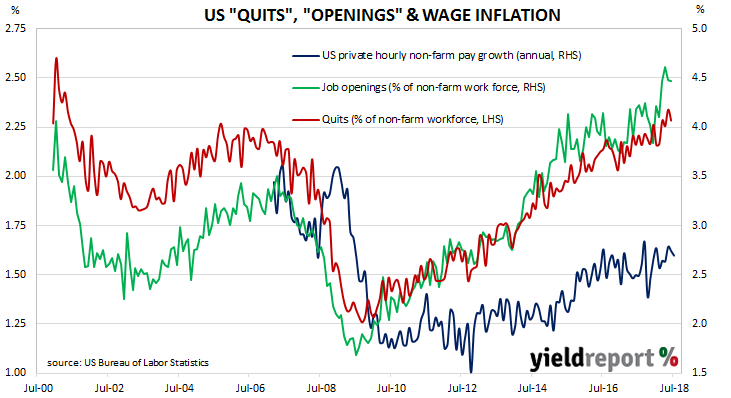The “quits” rate time series produced by the Job Openings and Labor Turnover Survey (JOLTS) is a leading indicator of US hourly pay. As wages account for around 55% of a product’s or service’s price*, wage inflation and overall inflation rates tend to be closely related. Former Federal Reserve chief Janet Yellen was known to pay close attention to the quit rate but whether new Fed chief Jerome Powell regards the indicator with as much interest is as yet unknown.
Figures released as part of the most recent JOLTS report show the quit rate remained unchanged after revisions at 2.3% of the non-farm workforce at the end of June. Quit rates were highest in the “Real estate, rental and leasing” and “Professional and business services” sectors while the “Other services”, “Education and health services” and “Leisure and hospitality” sectors each recorded noticeable falls. ANZ economist Giulia Specchia described the figures as pointing “to ongoing tightness in the labour market and modest upward wage pressures.”

Reactions by financial markets were subdued. The yield on US 2 year Treasury bonds edged up 1bp to 2.66% while 10 year yields moved up 3bps to 2.97%. According to cash futures prices, the probability of a rate rise at the September FOMC meeting is close to a certainty at 96% while the likelihood of another increase in December moved from 65.8% to 68.4%. The US dollar was essentially unchanged against other major currencies.

